- Home
- Lewis Carroll
Alice's Adventures in Wonderland and Through the Looking Glass (B&N) Page 2
Alice's Adventures in Wonderland and Through the Looking Glass (B&N) Read online
Page 2
Like both Freud and the surrealists, Carroll implicitly understood that a child’s emotions and desires appear omnipotent and boundless to the child—and thus make the adult’s forgetting of them difficult if not illogical. Growing up poses psychological and logical absurdities. The quandary of a logically grounded knowledge constituted out of an illogical universe pervades both books. The questions that Alice asks are not answered by the animals in Wonderland nor by anyone after she wakens. It is likely that her questions don’t have answers or that there are no right questions to ask. Alice’s Adventures in Wonderland and Through the Looking-Glass remain the most prophetic of the nineteenth century’s anti-narratives, inverted quest romances, circular mathematical treatises on the illogical logic of forgetting one’s desires. They display a logic that the child must master in order to grow up. As the White Queen remarks of the Red Queen: “She’s in that state of mind . . . that she wants to deny something—only she doesn’t know what to deny!” (p. 254).
For the child, the future lies undeniably beyond her (in a world of ever more sophisticated language skills), whereas for the adult, the future is something she must remember to return to. Carroll seems to be saying that children, in their rush to grow up, can pretend to be adults too soon; and adults can also, in a very different kind of game, forget how to be children—that is, forget the sensual, even nonsensical desires of childhood, which endure in language as in life. It is not surprising that children love puns and riddles, just as kings and oracles do. Carroll’s books of words and pictures, puns and riddles, indefinitely prolong the time of childhood nonsense. Carroll’s Alice books have a moral nonetheless: Like childhood, they end. And yet both books, which end with measured recollection and memory, seem to continue into the future.
Alice’s Adventures in Wonderland was published in 1865; Through the Looking-Glass appeared six years later in 1871. The first of the books began as an oral tale, told on a rowboat expedition up the Thames on a “golden afternoon,” most likely July 4, 1862. The party in the boat included Charles Lutwidge Dodgson (the mathematician, logician, and photographer who had already created the storytelling pen name Lewis Carroll), his friend the Reverend Robinson Duckworth, and the three Liddell sisters: Alice, who was ten; Lorina Charlotte, who was thirteen; and Edith, who was eight. Carroll was thirty at the time and had been ordained as a deacon the year before. Hardly a recluse, he enjoyed traveling, frequented the theater, took pleasure in giving un-birthday presents on any day of the year, wrote a large number of letters, invented mathematical puzzles, and was an avid amateur photographer who liked “making up pictures,”2 often composing his subjects in tableau-like settings that suggested make-believe stories. His sitters included Tennyson, Ruskin, the Rossettis, Millais, Queen Victoria’s son, Prince Leopold—as well as his favorite subject: Victorian children, particularly young girls. He gained First Class Honours in mathematics and produced a number of treatises on mathematics and symbolic logic, beginning with A Syllabus of Plane Geometry, which appeared in 1860. He was a polymath, albeit a conservative one. He considered Tuesday his lucky day.
The boat trip on that July day covered about three miles. The story that would become Alice, according to Carroll, was extemporized as they went along that day and over several subsequent trips. Carroll remembers how, “in a desperate attempt to strike out some new line of fairy-lore,” he sent Alice “straight down a rabbit-hole, to begin with, without the least idea what was to happen afterwards.”3 On one boat trip, Carroll tried to amuse the girls with a game but was forced to “go on with my interminable fairy-tale of Alice’s Adventures.”4 With some prompting by Alice Liddell, Carroll began penning the story he initially called Alice’s Adventures Under Ground. For reasons that are not clear, Carroll was banned from the Liddell household before completing the book, making the Alice books very much about a child as absent muse rather than as recipient of either of the books. The book—the title now changed to Alice’s Adventures in Wonderland—was published on July 4, 1865, to commemorate the date of that first boating expedition.
Despite their differences, both books chronicle the adventures of a girl named Alice, modeled on Alice Liddell, whose father was the dean of Christ Church, Oxford, where Carroll taught. Carroll first came to Christ Church in 1850. He stayed for nearly fifty years. During that time, Dean Liddell was busy attempting to modernize the college, turning it from a kind of genteel seminary into something more like a German university, a process Carroll resisted in characteristic fashion: He produced a series of comic pamphlets in protest. However, he was made a don after only five years, a feat remarkable even then. Carroll met Alice in 1856, when she was four. From that time onward, Carroll took a number of photographs of Alice and her siblings. Both Alice’s Adventures in Wonderland and Through the Looking-Glass begin with Alice on the verge of dreaming, but the books transpire in different seasons and evoke different moods.
Alice commences on a warm spring day, while Through the Looking-Glass is set in midwinter. The looking glass—as an analogue for the confusion of things that are knowable—was probably a relatively late addition by Carroll, added at a time when, according to Alice Liddell, the three sisters were themselves learning to play chess and Carroll was entertaining all three with stories about chess playing, among other things. The initial appearance of the looking glass was prompted by Carroll’s meeting with another young Alice, his cousin Alice Raikes, most likely in August 1868. In his biography of Carroll, Derek Hudson recounts the following incident:
The room they entered had a tall mirror standing in one corner. [Carroll] gave his cousin an orange and asked her which hand she held it in. When she replied ‘The right,’ he asked her to stand before the glass and tell him in which hand the little girl in the mirror was holding it. ‘The left hand’, came the puzzled reply. ‘Exactly,’ said [Carroll], ‘and how do you explain that?’ . . . ‘If I was on the other side of the glass,’ [Alice] said, ‘wouldn’t the orange still be in my right hand?’ . . . ‘Well done, little Alice,’ [Carroll] said. ‘The best answer I’ve had yet.’5
Carroll completed work on the sequel quickly; a manuscript entitled Behind the Looking-Glass, and What Alice Saw There was posted to Macmil lan in January 1869. It appeared, with its present title, in time for Christmas 1871, though its publication date reads 1872. The book was a wild success, selling out its initial print run of 9,000 copies almost immediately. By 1893 it had sold 60,000 copies.
TAMING CHANCE VS. ENDING BOREDOM
“I can’t remember things before they happen.” (p. 204)
“Can you row?” the Sheep asked, handing her a pair of knitting-needles as she spoke.
“Yes, a little—but not on land—and not with needles—” Alice was beginning to say. (p. 209)
Alice’s Adventures in Wonderland began as an oral tale told by Lewis Carroll to the three Liddell sisters, although it is often forgotten that Carroll’s fantasia of reading and upside-down geography lessons begins with a book, and specifically the aversion to reading one. In the first chapter, Alice, bored to tears and sitting on a river bank, peeks at and then turns away from her sister’s book because it lacks “pictures or conversations” (p. 13). She thinks to make a daisy chain, thus taking charge of her own boredom by ending it. Of course, Alice never does make herself a daisy chain, and in this she implicitly acknowledges that it may not be enough to want to end boredom to bring it to an end. It might be more accurate to say that boredom is ended for her by something she cannot entirely provide by herself. Not surprisingly, Alice’s dream, like the landscape of Wonderland itself, feels both expansive and boxed in, wonderfully curious and frustratingly opaque, an imaginary landscape that is located under as opposed to above ground.
For a child, boredom may be the biggest non-event or riddle to solve because its solution must come from without—while seeming to come from within. As Walter Benjamin wrote, “We are bored when we don’t know what we are waiting for.”6 Like the various creatures in Wonderland, boredo
m is a curious riddle of wanting something to want. Like a good many “acceptable” neuroses, boredom is indeterminate. It resists analysis. Not surprisingly, when Alice first sees the Rabbit she answers as any bored child might: “There was nothing so very remarkable in that” (p. 13). As the psychoanalyst Adam Phillips suggests, it may be a pedagogical and therapeutic mistake (Alice in Wonderland is filled with both) to try to cure boredom.7
If boredom is difficult to dispel, the boredom all children feel is not easily tolerated by adults, who insist that children have things to do, that they have interests. The field of symbolic logic and the adult’s attempts to eradicate boredom turn out to be equally coercive. Alice’s English and her manners are corrected relentlessly. Alice is bossed about: The rabbit orders her to fetch his handkerchief, a note on a bottle enjoins her to “drink me,” the caterpillar demands that she explain herself, the Queen summons her to play croquet. The result of such coercion is generally terror followed by tears, and there is much crying in Alice in Wonderland. Nearly all the players in Wonderland, with the exception of the Duchess and the Queen, are male, older than Alice, and contentious, imperious, or condescending in their adherence to strict rules. Even in play, logic reigns rigidly in Wonderland in a kind of spoof of the analytical philosophical logic popular at Oxford in Carroll’s day. One of the dangers in ending a child’s boredom is that the adult’s gesture will be, like a bad psychoanalytic session, too coercive, a kind of monstrous bestiary of loud-mouthed creatures and half-human authority figures—like Humpty Dumpty and a tyrannical Queen whose favorite line is “Off with her head!” What is Alice to do with other people’s wishes, other people’s logical desires? As Humpty Dumpty puts it, “The question is . . . which is to be master—that’s all” (p. 219).
Lewis Carroll was a teacher of symbolic logic at Oxford, and he loved to make mathematical knots for his pupils to wriggle out of. Carroll’s fondness for mathematical puzzles and classical logic admits of both the curious and trivial. He found logical problems and amusements in port prices, postal calculations, even lawn tennis. In 1883 he published a pamphlet, Lawn Tennis Tournaments, in which he proved, logically of course, that a player who lost in the first round might find that the finalist was an inferior player to herself. The lessons in Alice’s Adventures in Wonderland are clever impositions upon the logic, which is to say the reasonableness, of a child. Over the course of the two books, what might at first appear to the child as boring lessons in geography, anatomy, botany, astronomy, linguistics, geology (“What volcano?” [p. 161]), physics, and mathematics are transformed into the form most favored by oracles, kings, and children—riddles: Are flowers alive? Can a kitten play chess? Is saying what one means the same as meaning what one says? Is looking-glass milk good to drink? Both books commence with things that cannot be known, and both are thus about the curiosity and the desires provoked by unnamed somethings. In Alice, such somethings take the form of riddle-like creatures like Cheshire cats without bodies and rabbits with pocket watches. They may be something posing as nothing, or vice versa. In the book’s opening chapters, Alice falls literally into a riddle or void of insolubility: She cannot know how long her fall will be nor what is in the bottle on a small glass table, nor what will happen when she drinks from it.
Yet annoying and worrisome enticements are also—and Carroll seems to have understood this perfectly—incitations to desire, curiosity, and empathy—that is, open invitations not to be bored, not to remain the same as one was but to transform oneself, to relate to things and people outside oneself—and thus bring an end to one’s boredom. The book, like a camera obscura, mechanically and miraculously manufactures its exact mirror opposite. Out of Alice’s boredom arises a series of events defined by their whimsical changeableness, a series of frenetic and ridiculous lessons in bringing about the disappearance of the thing known as boredom itself. Nonsense, like boredom, turns out to be vast and chaotic, spanning inside and outside and defying notions of time and place, scale and sense, rightness and rudeness, rightness and leftness. Boredom seems a temporary non-event defined by a span of near-indeterminate waiting. Is Alice bored because she is desiring nonsensically or unreasonably?
In place of the dullness of an unread book and a large tract of time she doesn’t know how to fill, Alice confronts an officious White Rabbit who is worried about being late, a long or slow fall (it is impossible to tell which) down a hole lined with cupboards and empty jars of marmalade, a bottle that might or might not contain poison, and the frightful—that is, illogical—possibility of drowning in a pool of her own tears. Alice’s adventures are mathematically elaborate literary comfits or problem-sets, frustratingly opaque, more or less timeless events that are not quite events, with people who are not quite people, which is to say they are ridiculous obstacles to Alice’s desires.
What is the mirror opposite of boredom? It turns out to be a book, after all, one that mirrors and somehow inverts the most insoluble, and hence unforgettable, problems of the day: the extinction of species, the shifting, relative sizes of things, the loss of one’s identity and gravitas, and the speed of falling bodies. By chapter IV of Alice, “The Rabbit Sends in a Little Bill,” Carroll appears to have worked wonders upon his heroine and pupil Alice. In one of her most remarkable early bouts of reasoning, Alice concludes that if she drinks from the bottle, “something interesting is sure to happen” (p. 44). Before the end of Alice’s Adventures in Wonderland, the good-natured Alice will have been distracted from her boredom and will have experienced a host of emotions, from bewilderment over bottles and the right vs. left sides of mushrooms, exasperation with the Mad Hatter’s table manners, anger over the rudeness of countless inhabitants of Wonderland, enchantment with miniature gardens, fear of an enormous puppy, and loneliness at having driven a mouse away. Like riddles, the creatures generate an odd mix of pity, curiosity, and exasperation in Alice. The opposite of boredom turns out to be unsettling and frustrating. Ending boredom may be more dangerous a pastime than it at first appears. In this way, Carroll suggests that Alice must be careful that her desires don’t turn into worries. The boredom of the world is indeterminate, whereas worrying, because we tend to worry about something, is not—and this suggests that the subject of our boredom is somehow intrinsically insoluble, at least by worry.
One of the many paradoxes of both Alice books is that what at first appears trivial, nonsensical, or even boring might have some quite untrivial and curious lesson to deliver after all, and that the idea of the Victorian children’s book—whose aim is to educate young readers in the world of morality—might be turned entirely upside down and yet somehow fulfilled at the same time. Lessons in change are paradoxical, as Alice attests:
I wonder if I’ve been changed in the night? Let me think: was I the same when I got up this morning? I almost think I can remember feeling a little different. But if I’m not the same, the next question is, “Who in the world am I?” Ah, that’s the great puzzle!” (pp. 24-25).
In theory, lessons are imposed so that eventually they may be learned and mastered. Humpty Dumpty claims to be the master of the universe he discourses about. Such a position is precarious. The Liddell sisters would understand the failures of mastery from their scientific geography and mathematical books, some of which Carroll most likely copied into the Alice books. Alice’s various encounters and conversations, the mock trials and sporting events—such as croquet games with flamingos as mallets—tend not to go anywhere conclusive. Races are conducted that nobody wins. People sit down to dine but end up not eating anything. Alice or one of her interlocutors will simply walk away from a conversation. These episodes suggest an alternate and much less rational model of our lives, a cornucopia of blunders, non-conversations, and frustrating encounters. Beneath our rational, day-to-day arrangements and reasonable expectations lies something else entirely: a kind of slapstick psychopathology of our own everyday lives. Mastering boredom turns out to be no easier than mastering desire.
WELL-MEANING SPE
AKERS AND THE MASTERY OF LANGUAGE
“You won’t make yourself a bit realler by crying.” (p. 197)
Unlike most of the creatures in Wonderland, Alice tries to use words, perhaps illogically, to express concern for those around her. When Alice asks Humpty Dumpty a question about the relative safety of the wall vs. the ground because she is worried about the likelihood of his falling off the wall, Humpty Dumpty answers that “there’s no chance of ” (p. 215) his falling off, and then proceeds to explain what will happen if he does. In this exchange, which Alice feels is not like a conversation because Humpty Dumpty never “said anything to her; in fact, his last remark was evidently addressed to a tree” (p. 214). Alice’s questions, unlike Humpty Dumpty’s, are asked not “with any idea of making another riddle,” or a kind of linguistic dueling, “but simply in her good-natured anxiety for the queer creature” (p. 215). Morality, like laws and manners, are ways of living with one’s own and others’ desires. Yet Humpty Dumpty in his rudeness may be right. Perhaps all desires are riddles, especially to others. For if our desires are inexpressible, then the language with which we try to communicate our desires will appear, at least to others, as a kind of linguistic nonsense. The words for our anxieties may be an incomprehensible poetry of which only the speaker is master.
Although Alice’s feelings for others are almost never reciprocated, they are bizarrely like the creatures she speaks to, who could also be said to be too literal and perhaps too trivial for ordinary words. After her various encounters, Alice probably wonders what would it mean for her feelings to feel real? Wonderland abounds with rules, but are there any logical rules to having feelings? How should Alice talk to a Cheshire Cat or a Mad Hatter or a pet kitten named Dinah? Children tend to see animals as fellow creatures and are quite as comfortable talking to them as they are to people. It must be remembered that the kitten does not answer Alice’s questions and most of Alice’s conversations are unsatisfying:

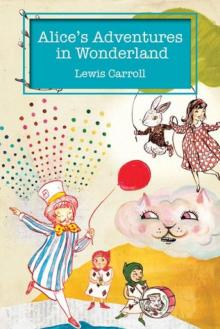 Alice's Adventures in Wonderland & Through the Looking-Glass
Alice's Adventures in Wonderland & Through the Looking-Glass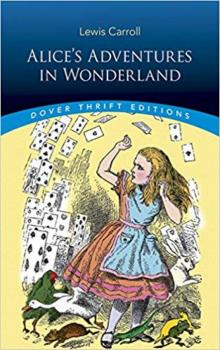 Alice's Adventures in Wonderland
Alice's Adventures in Wonderland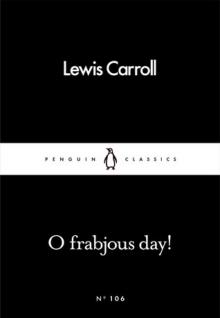 O Frabjous Day!
O Frabjous Day!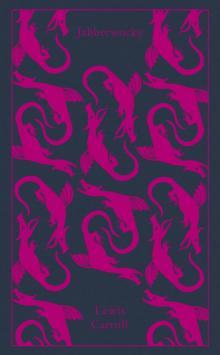 Jabberwocky and Other Nonsense
Jabberwocky and Other Nonsense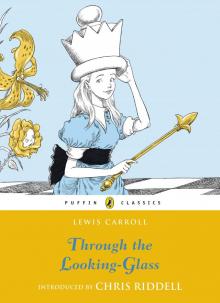 Through the Looking-Glass and What Alice Found There
Through the Looking-Glass and What Alice Found There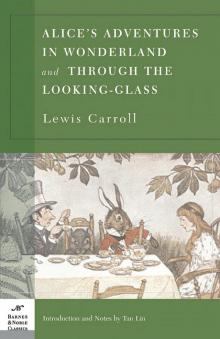 Alice's Adventures in Wonderland and Through the Looking Glass (B&N)
Alice's Adventures in Wonderland and Through the Looking Glass (B&N)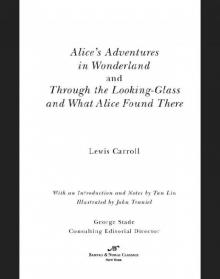 Alice's Adventures in Wonderland and Through the Looking Glass (Barnes & Noble Cla
Alice's Adventures in Wonderland and Through the Looking Glass (Barnes & Noble Cla The hunting of the Snark
The hunting of the Snark The Complete Alice in Wonderland (Wonderland Imprints Master Editions)
The Complete Alice in Wonderland (Wonderland Imprints Master Editions) Alice in Wonderland: The Vampire Slayer
Alice in Wonderland: The Vampire Slayer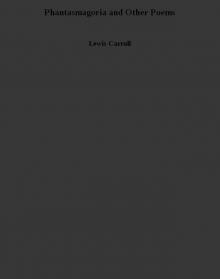 Phantasmagoria and Other Poems
Phantasmagoria and Other Poems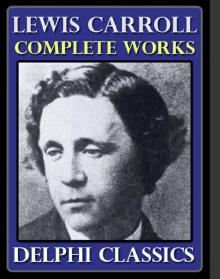 Complete Works of Lewis Carroll
Complete Works of Lewis Carroll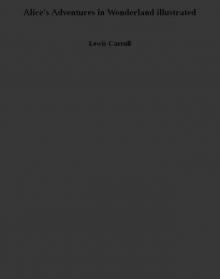 Alice's Adventures in Wonderland illustrated
Alice's Adventures in Wonderland illustrated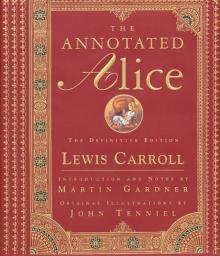 The Annotated Alice: The Definitive Edition (The Annotated Books)
The Annotated Alice: The Definitive Edition (The Annotated Books)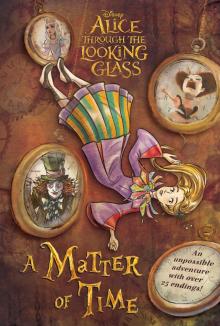 Through the Looking Glass
Through the Looking Glass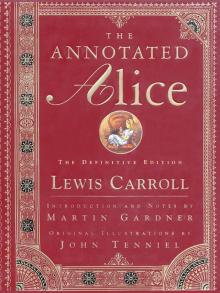 The Annotated Alice
The Annotated Alice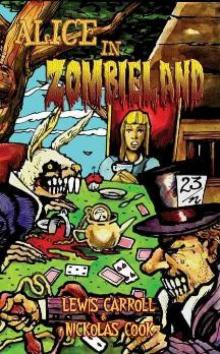 Alice in Zombieland
Alice in Zombieland